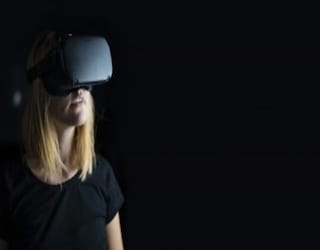Virtual reality representational image: Pixabay
The use of virtual reality is widely prevalent in various aspects of healthcare like medical education, diagnostics, surgery, and fitness. The pandemic brought about increasing limitations on budgets and standardisation, and VR surfaced as the new method of delivering simulation
“Virtual Reality is going to be an important technology. I am pretty confident about this.” – Mark Zuckerberg
Virtual reality (VR) is a computer-generated digital environment where scenes and objects appear as if real and are experienced through a device known as the VR helmet/headset. VR creates a unique sensory experience for the user, by including sight, touch, hearing, smell, and even taste. This environment is however, artificially created using images and sounds.
Medicine, education, architecture, and culture are some of the areas that have benefitted manifold through this technology. From guided museum visits to learning the nuances of a heart operation, VR enables us to cross boundaries that were earlier perceived never to be navigable.
The use of VR is widely prevalent in various aspects of healthcare like medical education, diagnostics, surgery, and fitness. The pandemic brought about increasing limitations on budgets and standardisation, and VR surfaced as the new method of delivering simulation.
The growth of the Indian medical device sector
Currently, India is the 4th largest market for medical devices in Asia, and among the top 20 markets for medical devices worldwide.
The medical devices industry in India comprises of large multinationals, and small and medium enterprises (SMEs). The growth of this sector has been significant and the current market size is approximately $11 billion, and is expected to reach $50 billion by 2025.
The Government of India has taken encouraging steps to ensure the growth of a thriving manufacturing hub of medical devices in India.
Simulation-based learning in healthcare
The medical industry is transforming every day at a relentless pace and adapting to these changes is the key. Rote learning has to make way for practical and more clinically relevant learning. Simulation-based learning plays a major role to ensure problem-based learning, experiential learning, and communication skills training. Simulation creates situations that replicate daily lives and enables a learner to behave as s/he would do in real life. Simulation is also proving more effective than traditional teaching methods of healthcare.
Consider the scenario when a patient is brought to the Emergency Room of a hospital for a surgical operation. Using the VR technology, the learner can be in a virtual ER (Emergency Room). This virtual environment created for the learner can enable them to interact with the patient and doctors just like in a real-life situation. They can learn what it takes to take a case history, examine, diagnose and treat the patient. This environment sharpens decision making, critical thinking, and clinical reasoning.
VR has made an evolutionary breakthrough in terms of a global perspective. People from anywhere in the world have equitable access to quality medical learning, reducing costs drastically.
A doctor in New York can examine a virtual patient mentored by a professor in Oxford and assisted by a nurse in India.
VR is clearly the technology of the future and is all set to revolutionise global healthcare education as it provides alternatives from traditional classroom learning, encouraging learners to practice and learn from their mistakes, and focus on core competency areas.
The author is the Co-Founder and CEO, MedisimVR













